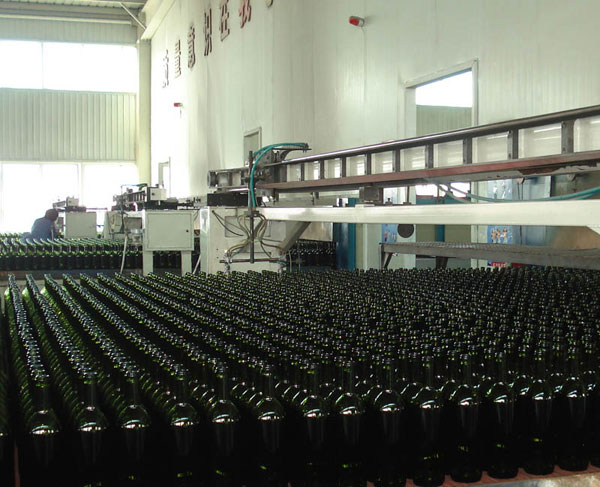Time:2024-07-02 22:36:19 Edit:管理員 Scan:235second

Introduction to the production process of glass bottles:
The production process of glass bottles mainly includes several steps: raw material preprocessing, batch preparation, melting, forming, and heat treatment. Raw material pre-processing involves crushing block shaped raw materials (quartz sand, soda ash, limestone, feldspar, etc.) to dry moist raw materials, and removing iron from iron containing raw materials to ensure glass quality. Batch preparation and melting refers to the process of glass batch being heated at a high temperature of 1550-1600 degrees Celsius in a tank or furnace to form a uniform, bubble free liquid glass that meets the molding requirements. Forming involves placing liquid glass into a mold to create glass products of the desired shape, such as flat plates, various vessels, etc., and undergoing heat treatment. Heat treatment refers to the process of annealing, quenching, and other processes to eliminate or produce stress, phase separation, or crystallization inside the glass, as well as to change the structural state of the glass.
In addition, some glass products can undergo hardening treatment to increase their strength. Including: physical hardening (quenching), used for thicker glass cups, tabletop glass, car windshields, etc. And chemical hardening (ion exchange), used for watch glass, aviation glass, etc. The principle of hardening is to generate compressive stress on the surface layer of glass to increase its strength.
Sometimes, according to the different needs of customers, glass bottle manufacturers also need to draw various exquisite patterns on the surface of glass bottles, which is what we often see on glass bottles. So, not only does it require advanced technology in the production process, but also unique design capabilities.

 Introduction to···
Introduction to··· What are the ad···
What are the ad··· Teach you how t···
Teach you how t··· Safety of glass···
Safety of glass··· The formation o···
The formation o··· The Internet br···
The Internet br··· What kind of fo···
What kind of fo··· Sparkling wine ···
Sparkling wine ···
